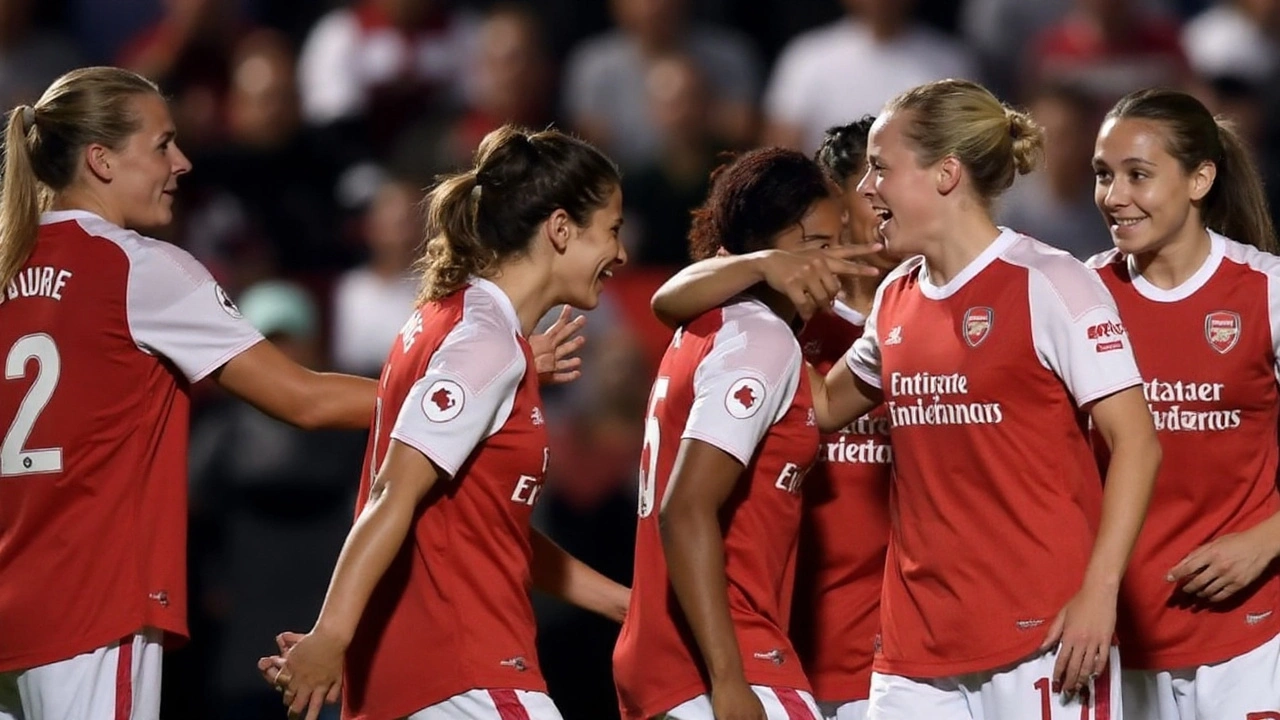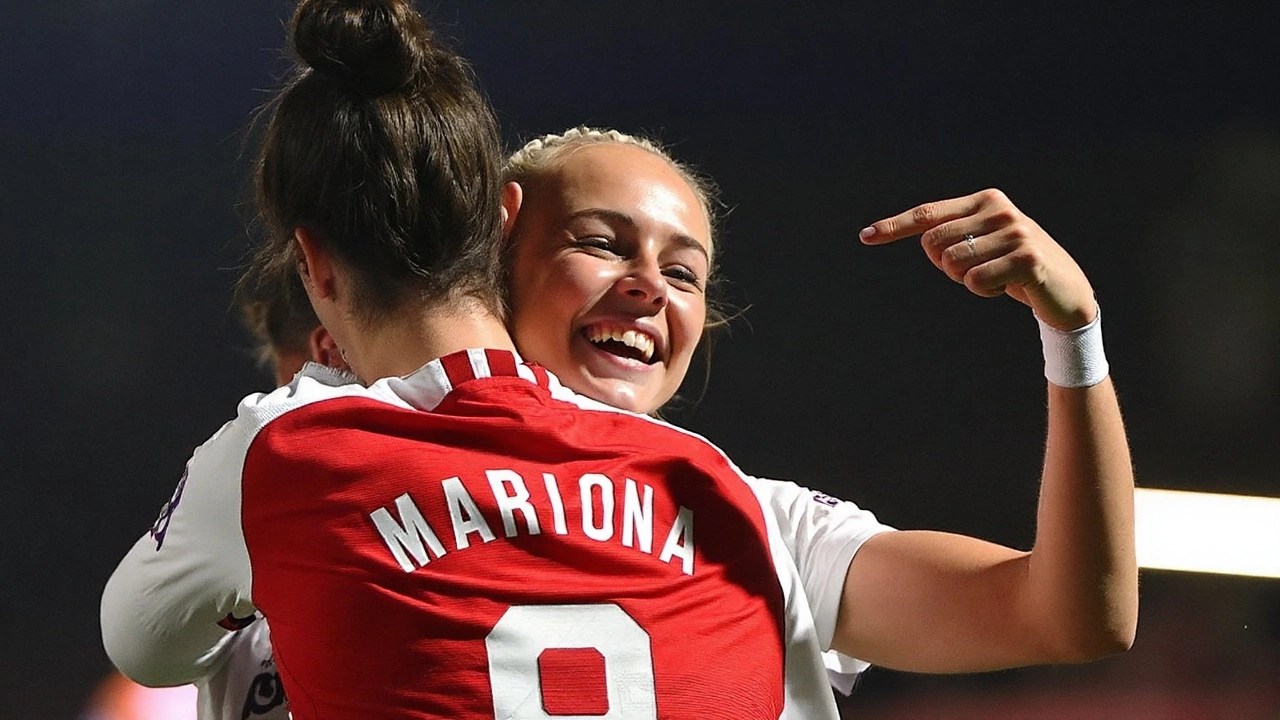A soggy shock, then a surge
Arsenal Women turned a rain-soaked scare into a statement win, hammering West Ham United 5-1 at the Chigwell Construction Stadium to keep their perfect start to the Barclays Women’s Super League alive on Friday night. The scoreline looked comfortable by the end, but it didn’t start that way. An early error gifted West Ham the lead, the crowd roared through the downpour, and for 20 minutes the league leaders were forced to dig in.
The opener came from a moment Arsenal will want to forget. Shekiera Martinez swung a teasing cross to the back post that should have been routine, only for Daphne van Domselaar to misjudge the flight and fumble it into her own net. West Ham had the jolt they wanted and pressed high with real bite. They rattled into challenges, flooded second balls, and fed off the energy of a soaked but buzzing home support.
Arsenal, to their credit, didn’t panic. They slowed the game, stitched together longer passing sequences, and began to pull West Ham’s press out of shape. The pressure paid off before half-time when Frida Maanum, timing her late run well, tucked away the equaliser with a cool finish. It was her second goal in as many games this season, and it changed the mood completely. From there, the visitors looked like themselves again: cleaner in possession, sharper in movement, and increasingly ruthless in the final third.
Manager Renee Slegers made a bold switch at the interval, replacing Maanum with Stina Blackstenius. It was a change with a clear message—stretch the back line, run in behind, and test legs that had chased hard in the first half. Blackstenius, known for turning games off the bench, immediately gave Arsenal more vertical threat and more targets for passes played on the slick surface.
Within minutes, the gamble paid off. Alessia Russo, drifting between the lines, delivered a delicate backheel that split West Ham’s centre-backs and put Blackstenius through. The Swedish forward sidefooted home with minimal fuss. One chance, one touch, one finish. Just like that, the comeback was complete and Arsenal had the lead.
West Ham wobbled. Arsenal didn’t wait around. Caitlin Foord cashed in next, reading the space, arriving at just the right moment, and driving a low finish beyond the keeper to make it 3-1. It was a classic winger’s goal—good timing, crisp execution, and a reminder of how Arsenal’s wide play can overwhelm teams that leave gaps between full-backs and centre-halves.
Then came the Russo show. The England striker doubled the advantage with a composed strike from open play, attacking the box with conviction and finishing with the kind of economy that separates elite forwards. Minutes later, she buried a penalty after a tangle in the area left the referee pointing to the spot. The conversion was clean and unhurried, the sort of finish that ends a contest and sends fans to the exits early.
Van Domselaar, stung by the early mistake, settled well. In the wettest spell of the second half she handled cleanly, punched when needed, and took the safest options under pressure. It wasn’t a night for heroics, but it was a steady recovery that kept West Ham from building momentum off set pieces as the game slipped away from them.
For West Ham manager Ryan Skinner, there were genuine positives in those opening exchanges. The game plan—high press, quick turnovers, early crosses—worked for a spell, especially in the rain where anything could happen in the box. But once Arsenal found rhythm, West Ham’s lines stretched and their distances grew. Chasing passing shadows is exhausting, and by the hour mark the gaps were big enough for Arsenal’s creators to pick their passes at will.
Arsenal’s control came from structure as much as talent. The wingers stayed chalk-on-boots wide, forcing West Ham’s full-backs to make unpleasant choices. Russo dropped into pockets, dragging markers and inviting midfield runners on. Blackstenius fixed the centre-backs with her runs. When the ball moved quickly from touchline to touchline, the home side simply couldn’t close lanes fast enough in the slick conditions.
This was also a win built by depth. Slegers’ bench changed the temperature of the match, and the shift wasn’t just about fresh legs. Blackstenius altered where West Ham had to defend—deeper, facing their own goal—while Russo thrived as a hybrid nine-and-creator. Behind them, the back line did the simple things right after the early chaos: clean clearances, compact distances, minimal risk.
Scorelines can flatter or deceive. This one did neither. Arsenal’s second-half surge was the product of sustained pressure and better decision-making in the key areas. Four different scorers underlined the variety of threat, and the way the goals arrived—one from patient buildup, one from a clever combination, one from wide play, one from relentless box presence, and one from the spot—shows a team capable of winning in multiple ways.
For Slegers, the table looks good. Perfect record preserved. Top spot secured. The performance sends a message: even when the conditions are rough and the start is rocky, this side can reset and tear through teams with pace and precision. The dressing room won’t love the early concession, but they’ll love the response more.
West Ham won’t enjoy the film session, but the first 20 minutes are worth keeping. The press rattled Arsenal, the wide service caused anxiety, and the willingness to test the goalkeeper in the rain made sense. The task now is sustaining that intensity without leaving the back door open—especially once opponents adjust and start playing around the first line.
On a miserable night for defenders and goalkeepers, the basics mattered. Clean touches, tight marking, smart body shape on crosses. Arsenal nailed those details after the break. West Ham lost their grip on them as legs tired and spaces grew. In games like this, the small things become big stories.
There’s a broader takeaway, too. Title-chasing teams put opponents away when the tide turns. Arsenal did exactly that, and they did it without leaning on one player to carry the load. Russo’s brace will grab headlines. Blackstenius changed the game. Foord was clinical. Maanum kept the scoreboard honest at the moment Arsenal needed it most. That spread of responsibility is what separates contenders from the pack as the season settles in.

What the result says about Arsenal and West Ham
Arsenal’s identity under Slegers is getting clearer: brave on the ball, aggressive in the counter-press, and deadly once the wide rotations click. They can play through pressure or run past it. They can turn a messy night into a showcase. Being able to flip the game state so convincingly after a setback is a hallmark of a side that expects to be there in April and May.
For West Ham, this can still be a building block. They proved they can unsettle a heavyweight in difficult conditions, and they created the scenario that every underdog wants: score first, raise the noise, lean on chaos. The next step is controlling transitions and surviving the immediate response after a setback. In this league, the moments right after a goal—scored or conceded—often decide everything.
By the final whistle, the rain had eased, the away end was singing, and the scoreboard told a blunt story. West Ham had their moment; Arsenal owned the rest. The leaders leave with three points, five goals, and another reminder to the league that perfect starts aren’t an accident—they’re built, adjusted, and then finished with a ruthless edge.
